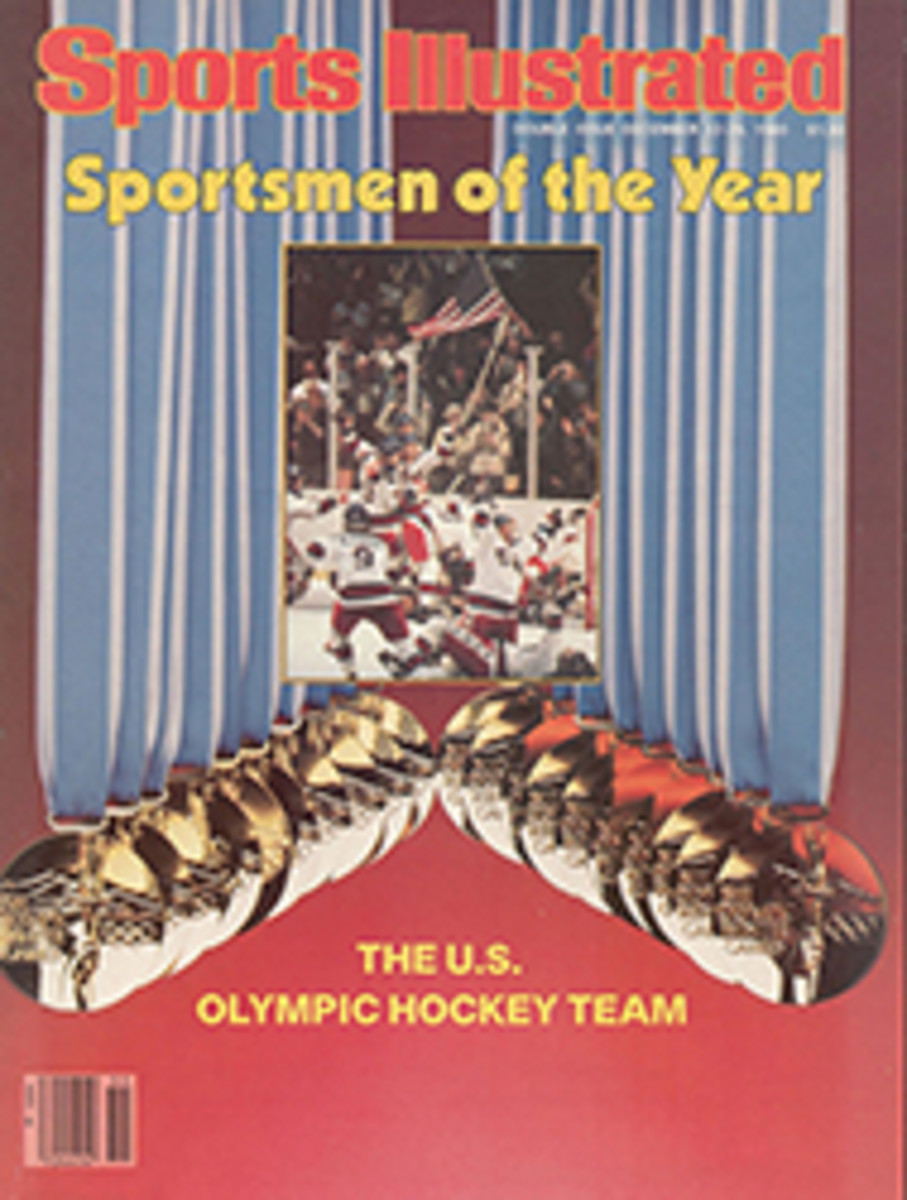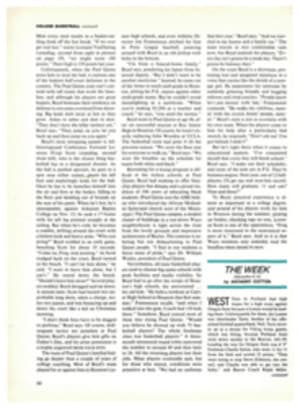
THE NEW YEAR'S DAY BOWLS WOULD BE BETTER IF THEY WERE TRUE PLAYOFFS
One of the great satisfactions of most spectator sports is that arguments get settled. Fans can wrangle over who'll win—the Steelers or Rams, the Lakers or 76ers, the Phillies or Astros—and then each drama is played to a conclusion.
But major-college football starts more arguments than it settles. The season usually ends in disarray, with bowls and polls. The bowls provide one-shot matchups of teams that are invited to play not only because of their football skills, but also for their ability to attract free-spending fans and draw huge television audiences. The bowls are followed by the polls, in which groups of sportswriters (the Associated Press poll), coaches (the United Press International poll) and other self-appointed experts arrive at rankings on the basis of insufficient evidence.
The main object of the polls is to name the mythical national champion, but they fail even to establish a uniform myth. Different rating systems have disagreed about the top rankings 65 times in the past 91 years. And dozens of lower-rated teams with records equal to or better than the "champions" have been deprived of the chance to prove their worth in head-to-head competition. As the year turns, it may happen yet again. Six teams—Georgia, Florida State, Baylor, North Carolina and BYU—may emerge from their respective bowls with one loss and no ties, and the polls may be left with a choice that could just as well be made by coin flips.
The confusion persists because the college delegates who vote on policy at NCAA conventions are understandably reluctant to tamper with a bowl lineup that last season produced more than $18 million for Division I-A institutions. They occasionally discuss playoffs, but they usually consider only timid proposals that would still concede to the bowls the choice of dates and participants.
I contend, however, that if the Division I-A schools would forcefully assert their right to control a playoff series completely, the bowls, which depend on major games to promote tourism, would fall into line, and a successful format for postseason play could easily be devised.
Indeed, a model for that format already exists: the playoff system begun by the NAIA in 1958 and adopted in a similar form by the NCAA's lower divisions in 1973. Although most major-college fans know little about its workings or its track record, this system of conducting championships is now used by more than 500 schools in five divisions. Basically, the system works this way: In each division small committees of coaches (NAIA) or athletic directors and conference commissioners (NCAA) follow the top teams, consult by phone and take part in weekly ratings polls. The final poll determines playoff qualifiers, but geography as well as ranking is taken into account; the most common formula is to invite the highest-ranked team in each of four regions and add the four other highest-ranked teams regardless of region.
NCAA finals are held at neutral, warm-weather sites, but all other games are held on the campuses of participants, which saves travel time and money and permits local fans to attend. Matchups and sites are resolved not only by seedings but also by the proximity of the schools, weather conditions, quality and size of facilities, and whether a team will have to travel in consecutive weeks. No playoff series extends past December.
Although the postseason schedule is crowded, with only a week separating most games, the playoffs haven't produced abnormally high injury rates, because, as Delaware Athletic Director Dave Nelson points out, "Football injuries are far more prevalent early on, before players are in shape." Nor has the playing of a few extra games put any unreasonable strain on the athletes' academic performances. According to Coach John Gagliardi, who has led St. John's University of Collegeville, Minn. into postseason play five times, "My playoff teams miss fewer classes in December than the basketball team does."
Naturally, the rating committees have drawn criticism from teams left out of the playoffs. But the committees are unquestionably more thorough than the voters in the wire service polls, and, says Coach Dave Maurer of Wittenberg University, "There is general agreement that they do a heck of a good job."
And the playoff competition itself is, in certain ways, fairer and more exciting than the bowl play in Division I-A. For one thing, a team cannot play for a tie in hopes of maintaining its reputation at the polls, because ties are broken in overtime. For another, an underrated team can gain more from an upset than being bumped up a notch in the ratings; it can climb as high as its talent will take it.
Consider how simple it would be for Division I-A to adopt the advantageous features of the minor-college system. Imagine, for example, this format:
A committee of athletic directors would monitor the leading contenders all season. The committee would then select 16 teams from among conference champions, co-champions, superior runners-up and independents. The first two rounds would take place on the last Saturday in November and the first Saturday in December on the campuses of qualifiers. The semifinals would be held on the third Saturday in December, and the finals on New Year's Day. These three games would be rotated among the four major bowls, and the excluded bowl would host a non-playoff game.
The bowl system would emerge unscathed. Each year three of the four major bowls would be guaranteed a holiday-season game directly affecting the national championship. And the minor bowls, which could invite non-playoff teams and early-round losers, wouldn't be hurt, because their outcomes have always been meaningless in deciding national titles. Combined revenues from the playoffs and the non-playoff bowls would result in a greater pie for everyone to divide, including nonparticipants.
Public interest would run higher than ever, because more teams would be in the hunt for the title late in the season. And the playoff series would instantly become an American classic, with the final game rivaling the Super Bowl and the World Series. Best of all, major-college football would at last be elevated from politics to sports, from establishing myths to establishing true champions.
ILLUSTRATION

